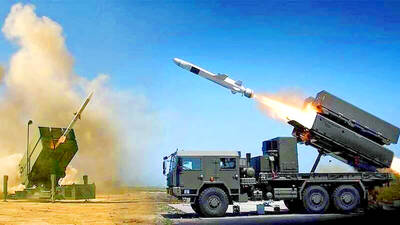Oil prices recovered some ground on Friday, rallying above US$71 a barrel on speculation that OPEC could slash output in an effort to stop crude’s downward spiral.
Light, sweet crude for November delivery rose US$2 to settle at US$71.85 a barrel on the New York Mercantile Exchange after earlier rising as high as US$74.30. On Thursday, prices lost US$4.69 to settle at US$69.85 a barrel.
Oil is now down US$75 — or 51 percent — since catapulting to a record high of US$147.27 on July 11.

PHOTO: AP
In London, December Brent crude rose US$1.76 to settle at US$69.60 a barrel on the ICE Futures exchange.
The bearish sentiment around oil has grown more feverish in recent days, lopping more than US$11 off prices in the previous three trading sessions alone. A barrel of crude hasn’t been this cheap in almost 14 months.
The pullback comes as a widening economic slowdown forces a wholesale contraction in US energy demand: Americans are driving less, airlines are keeping more planes on the ground and businesses are ramping down operations.
Worried about the financial fallout of the oil price drop, the OPEC, which controls 40 percent of the world’s oil supply, called a special meeting for next Friday in Vienna, Austria to address the slide. Underscoring the cartel’s anxiety, it moved up the date of the meeting by nearly a month.
An Iraqi lawmaker said on Friday the government expects to cut its budget next year by US$15 billion because of falling oil prices. Abbas al-Bayati, a senior lawmaker of the United Iraqi Alliance, the largest Shiite bloc in parliament, said the recent plunge would cut into earlier budget estimates, which were made when crude was hovering around US$120 a barrel.
Analysts say OPEC could decide to trim output by as much as 1 million barrels a day in a bid to halt the slide, in addition to a 500,000 barrel per day cut announced last month.
That may have led some traders to bid up oil on Friday, though any rally will likely be short-lived given the rapidly waning appetite for petroleum products, said Addison Armstrong, director of market research at Tradition Energy in Stamford, Connecticut.
”Demand is really in trouble,” Armstrong said. “Every week we get figures showing falling US demand for energy. European demand is just beginning to turn down, and all indications are that China is in for a significant economic downturn.”
“We could have prices in the low US$60 range very soon,” he said.
Still, some analysts say crude’s decline has been overdone amid the panicked selling in world equity markets.
“Even in a dire economic situation, a lot of energy use isn’t discretionary, so I expect prices to bounce back at some point,” said Gavin Wendt, head of mining and resources research at consultancy Fat Prophets in Sydney.
In other NYMEX trading, heating oil futures rose US$0.461 to settle at US$2.1569 a gallon, while gasoline futures rose US$0.441 to settle at US$1.661 a gallon. Natural gas for January delivery rose US$0.91 to US$7.306 per 1,000 cubic feet.

QUIET START: Nearly a week after applications opened, agencies did not announce or promote the program, nor did they explain how it differed from other visitor visas Taiwan has launched a six-month “digital nomad visitor visa” program for foreign nationals from its list of visa-exempt countries who meet financial eligibility criteria and provide proof of work contracts. To apply, foreign nationals must either provide proof that they have obtained a digital nomad visa issued by another country or demonstrate earnings based on age brackets, the Bureau of Consular Affairs said. Applicants aged 20 to 29 must show they earned an annual salary of at least US$20,000 or its equivalent in one of the past two years, while those aged 30 or older must provide proof they earned US$40,000 in

AIR DEFENSE: The Norwegian missile system has proved highly effective in Ukraine in its war against Russia, and the US has recommended it for Taiwan, an expert said The Norwegian Advanced Surface-to-Air Missile Systems (NASAMS) Taiwan ordered from the US would be installed in strategically important positions in Taipei and New Taipei City to guard the region, the Ministry of National Defense said in statement yesterday. The air defense system would be deployed in Taipei’s Songshan District (松山) and New Taipei City’s Tamsui District (淡水), the ministry said, adding that the systems could be delivered as soon as the end of this year. The US Defense Security Cooperation Agency has previously said that three NASAMS would be sold to Taiwan. The weapons are part of the 17th US arms sale to

SERIOUS ALLEGATIONS: The suspects formed spy networks and paramilitary groups to kill government officials during a possible Chinese invasion, prosecutors said Prosecutors have indicted seven retired military officers, members of the Rehabilitation Alliance Party, for allegedly obtaining funds from China, and forming paramilitary groups and assassination squads in Taiwan to collaborate with Chinese troops in a possible war. The suspects contravened the National Security Act (國家安全法) by taking photos and drawing maps of key radar stations, missile installations and the American Institute in Taiwan’s headquarters in Taipei, prosecutors said. They allegedly prepared to collaborate with China during a possible invasion of Taiwan, prosecutors said. Retired military officer Chu Hung-i (屈宏義), 62, a Republic of China Army Academy graduate, went to China

UNITY MESSAGE: Rather than focusing on what Trump said on the campaign trail about Taiwan, Taipei should be willing to engage with the US, Pompeo said Taiwan plays a key role in Washington’s model of deterrence against China, former US secretary of state Mike Pompeo said in a speech in Taipei yesterday. During US president-elect Donald Trump’s first term, “we had developed what we believe was a pretty effective model of deterrence against adversaries who wanted to undermine the set of rules and values that the people of Taiwan and the people of the US hold dear,” Pompeo said at a forum organized by the Formosa Republican Association. “Succeeding in continuing to build this model will not solely rest at the feet of president Trump and his team,